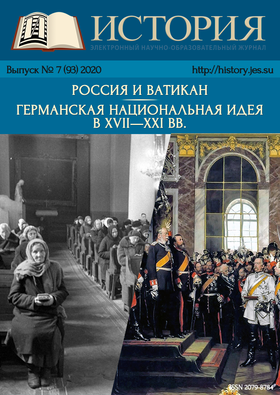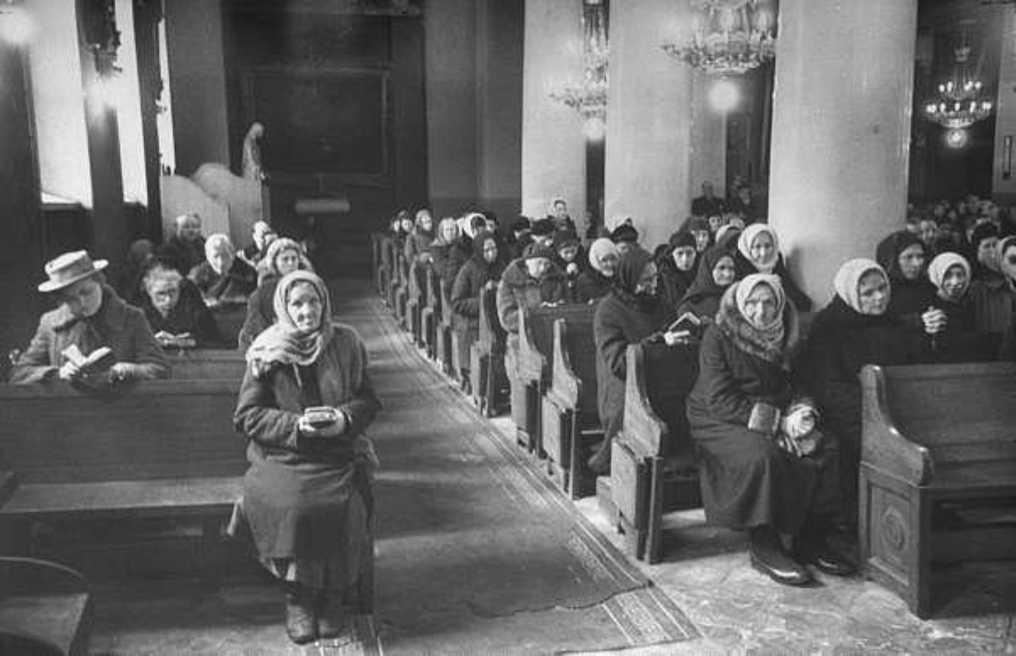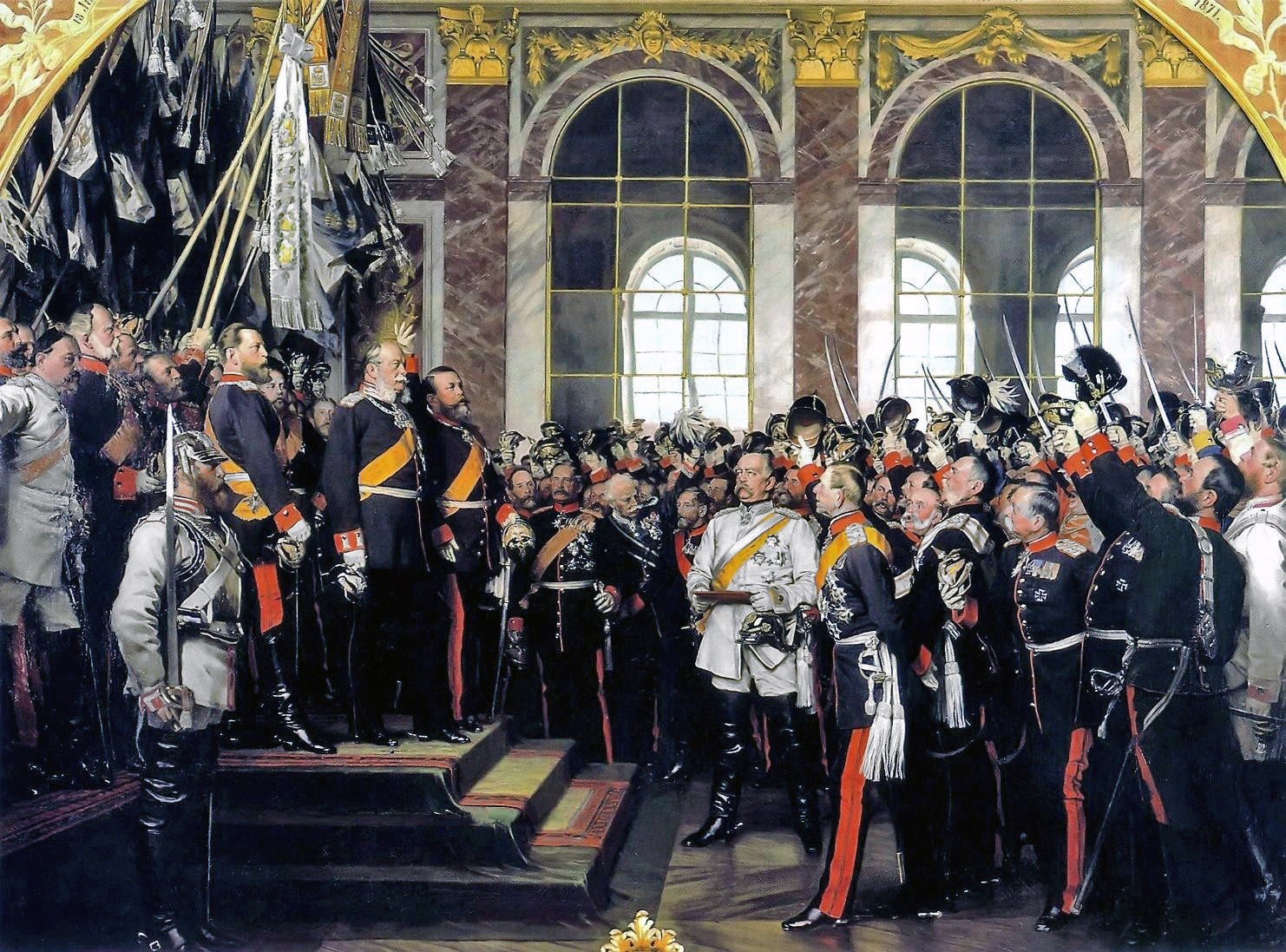
Share
Part I. Russia and the Vatican. Catholics in the Soviet Union: Testimonies of Ordinary People about the Radical Transformations of the 1920s — 1950s (ed. by Evgeniya Tokareva, Aleksey Beglov, Nadezhda Belyakova)
Summary
This part of the issue contains materials of the international conference “Catholics in the Soviet Union: Testimonies of Ordinary People about the Radical Transformations of the 1920s — 1950s”, held in Moscow on April 7—8, 2020.

The conference was held as part of the project “Entangled Histories: Russia and the Vatican, 1917—1958”, supported by the Russian Science Foundation (No. 19-18-00482) and implemented at the Centre for the Study of the History of Religion and Church History (Institute of World History of the Russian Academy of Sciences). The goal of the project is, first of all, to identify and then publish as many documents of non-state origin as possible. The documents would allow to take a closer look at the life of ordinary people in Soviet Russia, to see through their eyes how historical events were unfolding, to get closer to their understanding and assessment of these events (in comparison with official documents).
The situation that developed in Russian historiography in the 1990s, after the opening of the archives of the Soviet period, is called the “archival revolution”. The documents produced by the ruling party, state and punitive bodies, introduced into scholarly circulation, significantly expanded our understanding of the history of our country during the Soviet period. They formed the basis for many academic publications, and popular speeches. Some of them were sensational; the newly revealed information was presented as the ultimate truth. However, in the second half of the 1990s warnings about sources of party and state origin were aired in the academic community. Some researchers drew attention to their one-sidedness, to the fact that their authors constructed reality in a particular way. Particularly radical critics of the absolute trust in new sources have come to refer to this approach as “archival fetishism” (Stephen Kotkin).
These problems were even more clearly revealed by the example of documents created by the Cheka–OGPU–NKVD. Particularly serious doubts were expressed as to the information contained in the investigative files of the repressed. Some researchers (in particular, L. A. Golovkova) argued that from the investigative cases of the period of Great Terror (1937—1938) only very limited information could be extracted (i. e. that a particular person was shot) and all other information contained, including in the protocols signed by the person under investigation, should be considered unreliable. Other researchers were less radical, but also expressed doubts regarding the reliability of investigative cases as a historical source.
It is possible to say that today the academic community is aware of the problem of the insufficiency of state-produced sources when it comes to carrying out some research tasks. One of these tasks is to study the history of everyday life of the population of the USSR, including the discriminated social groups, such as various Christian denominations.
The search for and introduction of new sources into scholarly circulation could lay down a foundation for the process of re-orienting Russian historiography towards writing an non-institutional history addressed to the ordinary person as an actor in the historical process. This change of perspective is highly pertinent to modern social history and historical anthropology, as well as to the latest trends in the sociology of religion that are primarily focused on the study of the inner world of believers rather than the mechanisms of functioning of official institutions.
Another aspect of the possible use of new sources is the relationship between the Catholic and Orthodox Churches. In the context of a full-scale fight against religion, in general, and the Church in Russia, in particular, both Catholics and Orthodox were looking for contacts and common grounds where their interests could converge. Little is known about this aspect of history due to the fact that current sources do not allow us to get into this deeply hidden, underground mode of existence of the Catholic subculture.
In this context, the conference was designed to facilitate the exchange of best practices in the field of studying sources of non-state and non-partisan origin related to the life of believers in the USSR, outline methodological approaches to their analysis, and ultimately encourage further research of this type of documents. The lively discussion that unfolded during the conference shows that these goals were achieved. Unfortunately, we cannot provide a transcript of the discussion on the pages of this issue, but those who are interested can get acquainted with the discussion itself on the YouTube-channel of the Centre for the Study of the History of Religion and Church History (Institute of World History, Russian Academy of Sciences).
The conference was divided into four thematic panels, each of which corresponded to a certain type of sources: epistolary genre (discussed in the articles by V. Bilotas, A. Vishivanyuk, N. Belyakova, S. Yarmusic), memoirs (reviewed by W. Lipke, T. G. Nazaruk, L. V. Aliyeva and A. Verle, J. V. Shapoval), the materials of oral history and ethnographic expeditions (the article by D. I. Naumov and K. G. Savitsky); the last panel was devoted to the regional section of everyday life of Catholics (discussed by D. Panto, N. In. Potapova, and A. V. Shadrina). Moreover, a number of papers included reviews of Polish as well as American archives (V. Rezmer, K. I. Rodionova, G. Freeze), which, along with the Vatican archives, are rich in archival collections related to the history of the Catholic Church in Russia. A possible theoretical basis for such a research is discussed in the article by Prof. Gregory Freeze (Brandeis University), the head of the project.
Part II. German National Idea in the 17th — 21st Centuries (ed. by Vasiliy Dudarev)
Summary
 The German question for many centuries played a special role in the turbulent processes that took place on the European continent. The unprecedented state-political fragmentation inherited from the Middle Ages became not only a key factor in the development of Central Europe, where there were about 300 secular states and ecclesiastical possessions, conditionally united by the concept of “Germany”, but also an important element of the European system of international relations of the Modern History. Under these circumstances, German intellectuals, politicians, economists, and artists proposed their own projects for solving the German national question, both by peaceful reform and strengthening of the unification principles in Germany, and by military means. Unification of Germany in the nineteenth century was a characteristic sign of the actual dismantling of the European system defined by the decisions of the Congress of Vienna. The further development of international relations, where the new German state played an important role, led to the formation of a block confrontation, which resulted in the First World War and a deep crisis that hit the German society. After the First World War the search for a new justification for the national idea became a characteristic feature of the German socio-political landscape, in which, along with conservative and reformist concepts, the ideas of “living space”, racial superiority and the “Millennial Reich” were reincarnated. One of the consequences of the greatest catastrophe in the history of mankind was the emergence of two German States, the legitimization of which required the search for new ideological foundations and national identity. German-German relations were a characteristic feature of the Cold War that defined the course of World history in the second half of the twentieth century: the state border between the FRG and the GDR was also the border between the capitalist and socialist worlds. In this regard, the reunification of Germany in 1990 became a symbol of the end of the Cold War and the search for new forms of the global world order. In this section of articles, well — known Russian germanists discuss the peculiarities of the formation and development of the German world and the German national idea during the 17th — 21st centuries. The political, ideological, and social aspects of this problem studied by the authors are considered in most articles against the background of Russian-German relations, which have been an important factor in European international relations for several centuries.
The German question for many centuries played a special role in the turbulent processes that took place on the European continent. The unprecedented state-political fragmentation inherited from the Middle Ages became not only a key factor in the development of Central Europe, where there were about 300 secular states and ecclesiastical possessions, conditionally united by the concept of “Germany”, but also an important element of the European system of international relations of the Modern History. Under these circumstances, German intellectuals, politicians, economists, and artists proposed their own projects for solving the German national question, both by peaceful reform and strengthening of the unification principles in Germany, and by military means. Unification of Germany in the nineteenth century was a characteristic sign of the actual dismantling of the European system defined by the decisions of the Congress of Vienna. The further development of international relations, where the new German state played an important role, led to the formation of a block confrontation, which resulted in the First World War and a deep crisis that hit the German society. After the First World War the search for a new justification for the national idea became a characteristic feature of the German socio-political landscape, in which, along with conservative and reformist concepts, the ideas of “living space”, racial superiority and the “Millennial Reich” were reincarnated. One of the consequences of the greatest catastrophe in the history of mankind was the emergence of two German States, the legitimization of which required the search for new ideological foundations and national identity. German-German relations were a characteristic feature of the Cold War that defined the course of World history in the second half of the twentieth century: the state border between the FRG and the GDR was also the border between the capitalist and socialist worlds. In this regard, the reunification of Germany in 1990 became a symbol of the end of the Cold War and the search for new forms of the global world order. In this section of articles, well — known Russian germanists discuss the peculiarities of the formation and development of the German world and the German national idea during the 17th — 21st centuries. The political, ideological, and social aspects of this problem studied by the authors are considered in most articles against the background of Russian-German relations, which have been an important factor in European international relations for several centuries.
